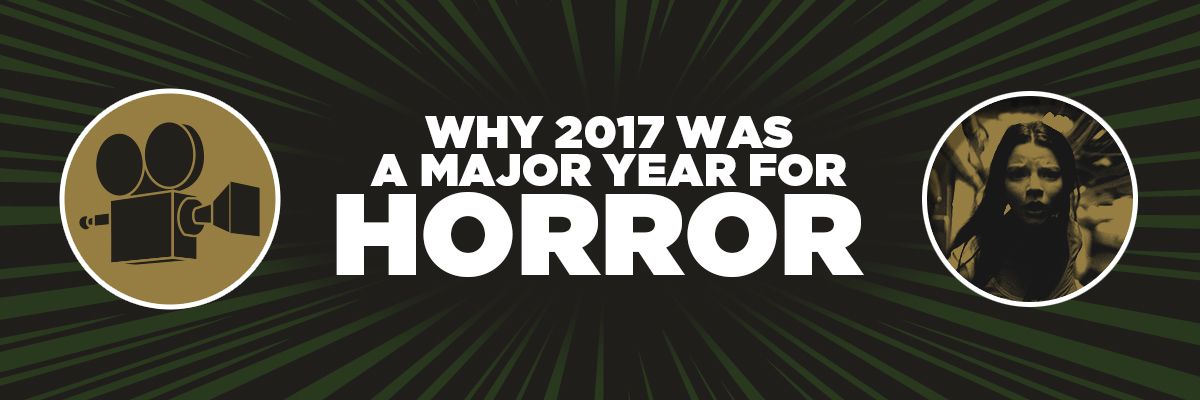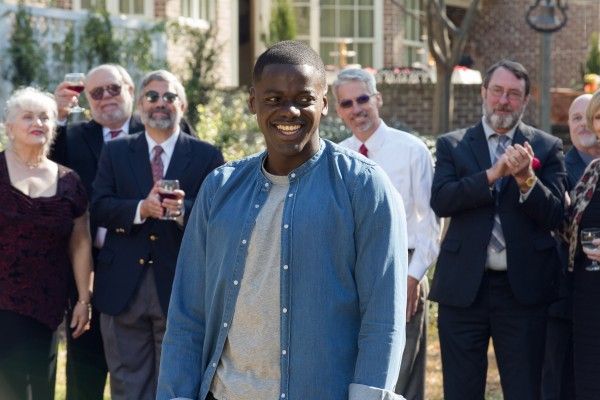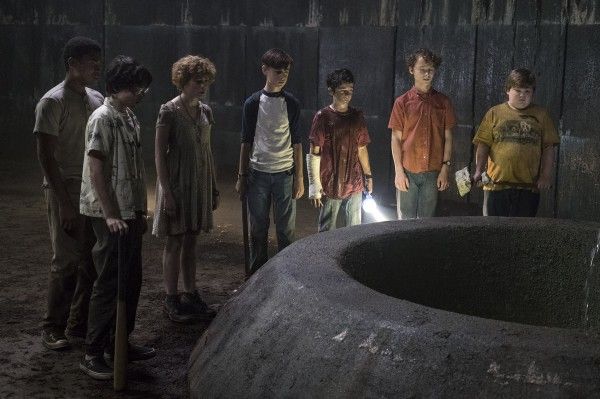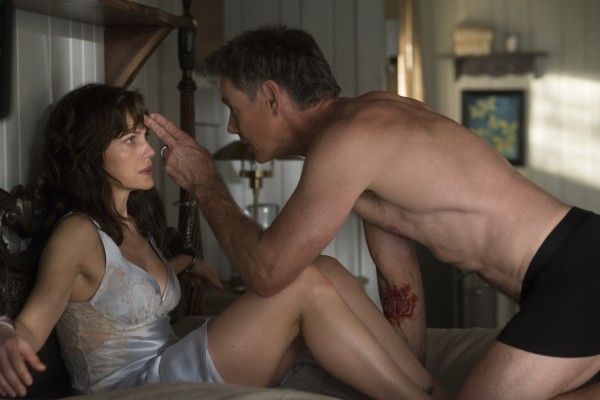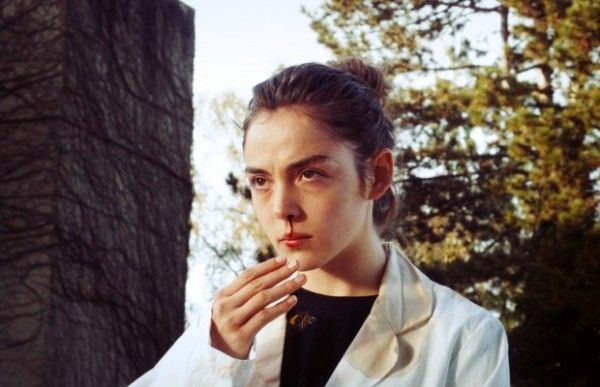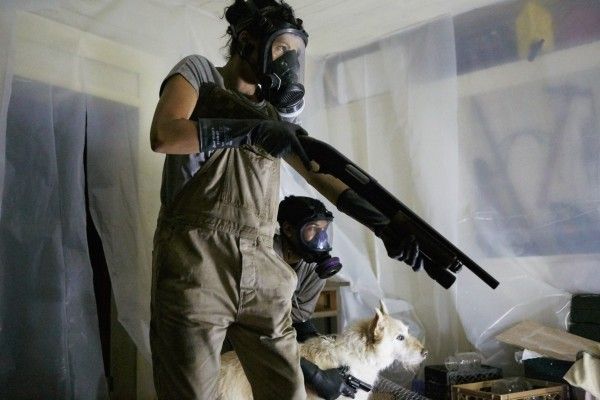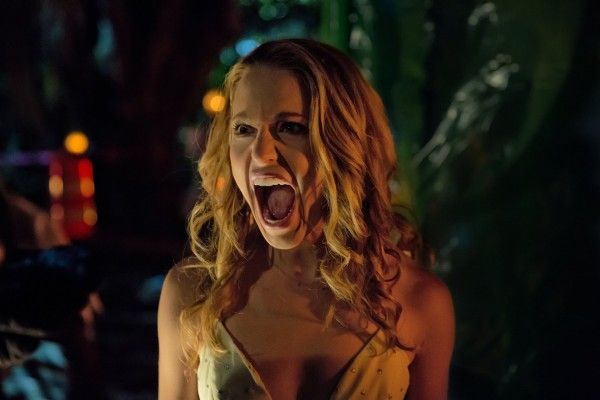There's been no shortage of reasons to be afraid in 2017, a year marked by political upheaval, natural disasters, and national tragedies across the board. Yet, contrary to what you might expect, audiences turned out in droves to get an added dose of terror from killer clowns, possessed dolls, and whatever other creepy creations filmmakers conjured up for audiences. Don't get me wrong, it's not a surprise to see horror do well. The oft-ignored genre has long been a reliable, affordable backbone of the film industry despite the ritual shunning come awards season, but even with that in mind, 2017 has been a truly stunning year for horror. It's a year of six Stephen King adaptations, when an outright horror film has a shot at a best picture nomination, and when the box office soared to become the biggest, highest-grossing year for horror of all time.
Blumhouse kicked things off early on with the one-two punch of Split and Get Out, which arrived in theaters at the end of January and February, respectively. The usually tepid early-year box office bloomed in the hands of Blumhouse's horror filmmakers; M. Night Shyamalan's psycho-thriller/surprise sequel earned more than $130 million domestically and Get Out's cultural cache and buzzy word of mouth catapulted Jordan Peele's microbudget directorial debut to a stunning $175 million. After that, the wins just kept on coming. The sharksploitation chiller 47 Meters Down yielded impressive numbers relative to its budget, despite the fact the film leaked early online, and New Line's Annabelle: Creation outpaced the original and crossed the $100 million mark at the box office, cementing The Conjuring-verse as a billion dollar franchise worldwide.
But it was New Line's other big horror hit of the year that surpassed every expectation, earning critical acclaim, dominating social media conversations, and shattering box office records to become the highest grossing horror film of all time. That film is, of course, Andy Muschietti's IT. Based on the beloved Stephen King novel about a deadly interdimensional force tormenting the townspeople of a small town. Produced with a moderate budget, IT captured audiences to the tune of $327 million domestically and more than double that worldwide, making it the rare horror film that could go to bat against superhero cinema and the Disney cabal. As you might expect, New Line is already hard at work on a sequel.
On the heels of IT's unprecedented box office success, the New York Times reported that 2017 is officially the highest-grossing year in horror history, noting an upwards performance trend for the genre across the decades. And the year wasn't even out yet. The PG-13 slasher Happy Death Day -- another Blumhouse win -- piled on another $55 million domestically. Jigsaw, while viewed as a disappointment compared long-passed money-printing days of the Saw franchise, threw another $38 million on the horror total. Both films topped $100 million worldwide.
As if the numbers aren't impressive enough, it's not just a matter of box office bounty that sets 2017's horror lineup apart, but also the output, quality, and perhaps most unusual of all, critical and awards acknowledgment. Get Out is in the thick of an impressive awards campaign that pegs it as a favorite for a Best Picture nomination, and has already scooped up noms from the Spirits, Golden Globes, and SAG Awards, in addition to the title of AFI's Movie of the Year. IT was a home run with critics and audiences alike and despite being snubbed from the makeup and hair category, still has a shot at some technical Oscars, with Benjamin Wallfisch's evocative score landing a spot on the Academy shortlist.
Even the horror films that didn't break out the box office or punch through the genre awards ceiling have found a place in the conversation as indie darlings; the lurid thrills of Julia Ducournau's coming-of-age cannibal movie Raw, Trey Edward Shults' mismarketed viral/psychological horror It Comes at Night, and of course, the Darren Aronofsky's madcap biblical allegory mother!, which dominated the zeitgeist for a moment despite bombing out with audiences and critics alike. Dig even deeper into the realm of limited released and home video hits and you'll find an abundance of exciting, creative horror films that landed this year: the Irish dark magic thriller A Dark Song, the traumatic Australian serial killer drama Hounds of Love, the subversive zombie reimagining The Girl with all the Gifts, and Netflix's set of Stephen King adaptations, Gerald's Game and 1922, just to name a few. We even got a delightful new Chucky movie. No matter where you turned in 2017, be it the local cineplex, your favorite streaming service, or your favorite source for under-the-radar films, 2017 has been an embarrassment of riches. But why?
Much of it no doubt has to do with quality. It's not unusual for horror films to blow up at the box office despite modest means of production -- just ask Jason Blum or the folks at New Line. What is unusual is how many horror movies blew up this year, and that's likely because so many of them were, bottom line, good films with good word of mouth. Then there's the matter of cultural context. There's no greater example of right time, right place than Get Out, which arrived at the precise right moment of the political conversation to cut through like a hot knife in butter. Applying that idea to a broader scale, 2017 has by and large been one of the most traumatic, discordant years in American history, from politics and renewed threats of nuclear war, to natural disasters and acts of domestic terrorism, 2017 has washed over like a tidal wave of ice water.
It might be counterintuitive, but it's human nature to turn to horror for distraction in times of peril. Dr. Margee Kerr, a sociologist specializing in fear, explained to the NY Post, “Horror and startle can distract us from the everyday thoughts and concerns. We’re not thinking about our bills, about the future of the economy, about health insurance – we’re completely in the moment and feeling powerful thanks to the cascade of chemicals released in times of threat.” We did it in the turbulent times of the 1970s, which became one of the most fruitful, definitive periods in horror history, and again in the early 200s, when the visions of 9/11 and the War on Terror spurred on the waves of found footage and so-called "torture porn". When the times become too chilling, we look for escapist horrors to light a fire and get the blood flowing.
Looking ahead, can 2018 measure up to the record-setting creative bounty of this year? Realistically, probably not -- it's not every year that an IT or a Get Out comes along -- but it's another stacked lineup of genre releases and after the billions in box office this year, you have to imagine studios will be more open than ever to horror pitches.
Blumhouse is looking to start the year strong again with the release of Insidious: The Last Key in January and tap into another franchise audience with the prequel The Purge: The Island in July. New Line will target the summer crowds with their The Conjuring 2 spinoff, The Nun. Each of those films is poised to perform, with built-in franchise audiences and exciting new filmmakers iterating those worlds. Alex Garland’s Ex Machina follow-up Annihilation will also land in theaters for those in the States (on Netflix internationally), and while the film’s surreal structure of the source material could evade audiences, the biological terrors as interpreted by the reliably sharp sci-fi filmmaker seem likely to stir up some buzz.
In the back half of the year, Blumhouse might have another big winner on their hands with the Halloween remake from David Gordon Green and Danny McBride, which might just combine the brand name power of John Carpenter's iconic Halloween franchise with Blumhouse's keen eye for picking filmmakers. Likewise, Shane Black's The Predator is a potent combination of filmmaker and brand. Other noteworthy titles and potential breakout hits include The Strangers: Prey at Night, the long-awaited The Strangers sequel from 47 Meters Down helmer Johannes Roberts; A Quiet Place, the mysterious thriller A Quiet Place from John Krasinski and Emily Blunt; and The Endless, the buzzy Lovecraftian festival hit from Spring filmmakers Aaron Moorehead and Justin Benson.
As I said, after this year's box office tally and conversation-dominating presence, there's no doubt studios will be eyeing to tap into the horror market even further and that's an exciting idea. Here's hoping they learn the right lessons. IT, Get Out and the rest of the lot took off because they were good films rather than blatant cash grabs. We don't want more killer clowns -- we want movies with creative vision, and if studios can learn that lesson, then the audiences will be there, because judging by the daily headlines, we're going to be needing horror films to distract us for some time to come.
For more of the big horror news from the year, check out the links below and be sure to check out our running list of the best horror movies of 2017 so far.
- Let’s Talk About That ‘American Horror Story: Cult’ Finale
- Steven Soderbergh’s Mysterious iPhone-Shot Horror Movie Set for 2018
- Universal’s Dark Universe May Be Dead; Producers Alex Kurtzman & Chris Morgan Depart
- Jessica Chastain Is Definitely Down to Play Adult Beverly in ‘IT 2’
- Don Mancini Breaks Down that Crazy ‘Cult of Chucky’ Ending

